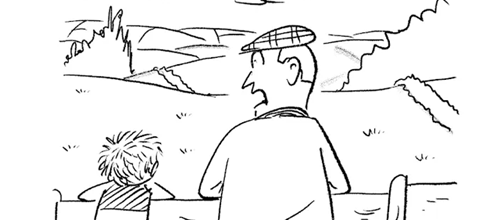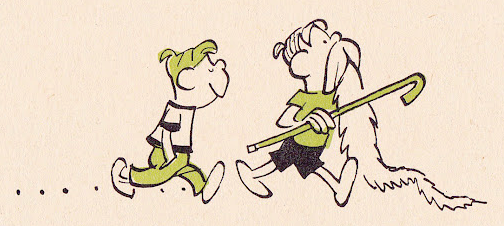Whatnot Wednesday Weirdness
Skip to commentsNewspapers

From this past weekend’s Albany Times-Union:
On April 4, 1924, the Times Union told its readers it had officially became a Hearst publication, ending its years as a privately owned newspaper under the stewardship of publisher and former New York Gov. Martin H. Glynn. But the article noting the sale pledged there would be “no changes in the policy of The Times-Union.”
Don’t know why The Times-Union waited almost three months to celebrate 100 years of being a Hearst paper, but they produced a late July special.
While the history of the Times Union can be traced back to 1856, William Randolph Hearst bought the Capital Region’s leading newspaper in 1924. Here’s what that’s meant for this institution and the communities we serve.
So we’ll celebrate with a 1938 Times-Union promo from 1938:


**********
Animation
Meet WWII’s Cartoon Soldier: Private Snafu

Private Snafu, a WWII cartoon character created by the U.S. War Department, learns about the dangers of rumors and their impact during wartime.
Liam Frady for History-Computer deconstructs (with the help of Wikipedia) a 1943 instructional cartoon.
The short that is the focus of today’s recap [Rumors] is directed by Friz Freleng, best known for his work with Warner Brothers. Despite its use as an educational tool, Private Snafu proved popular while instructing on multiple topics.
**********
Interactive Museum

Rube Goldberg™: The World of Hilarious Invention! Exhibit is on display at the Cade Museum for Creativity and Invention now through December 2024. Created by the Children’s Museum of Pittsburgh in partnership with the Heirs of Rube Goldberg,the exhibition showcases Pulitzer Prize winning humorist and inventor Rube Goldberg’s iconic contraptions and celebrates his humorous storytelling and inventive cartoons.
Visitors can activate and create crazy chain-reaction contraptions that use everyday objects to complete simple tasks in the most overcomplicated, inefficient and hilarious ways possible! Rube Goldberg machines are many things, but they aren’t perfect.
TMCNET reproduces the press release for the exhibit’s Pittsburgh showing.

********
AI Apology
Founder and publisher of Gila-Gila, Malaysia’s best-selling comic magazine, Jaafar Taib, has apologized for its latest cover artwork generated by AI. The 71-year-old cartoonist took to Facebook yesterday to admit that he had made a huge mistake which should never have occurred.

“I promise to do everything in my power to correct this mistake.
“From now on, Gila-Gila will return to our original principles, which are to be a platform for showcasing original artworks created by local talents.”
Full story at The Malay Mail and at Cryptopolitan.
**********
More Animation
As I passed through the streets of the Zocalo in Mexico City’s colonia Centro, a familiar phrase caught my ear. “Ándale, mijo,” a father urged his dawdling son, gently steering him through the bustling morning crowd. “Ándale.” In an instant, my mind automatically conjured the high-pitched voice of a cartoon mouse: “Ándale! Ándale! Arriba! Arriba!” The memory of Speedy Gonzales, the “fastest mouse in all Mexico,” flashed through my mind, complete with his oversized sombrero, exaggerated accent and outsized bravado.

Monica Belot for Mexico News Daily writes of how Speedy Gonzales outran cancel culture.
As awareness of cultural sensitivity grew in the late 20th century, Speedy Gonzales found himself at the center of a heated debate. Between 1999 and 2002, Cartoon Network pulled Speedy Gonzales cartoons from its U.S. broadcast lineup, citing concerns over ethnic stereotyping.
The move backfired, sparking an outcry — but not from the group one might expect. Instead of praise from progressives, the network encountered a backlash from an unexpected source: the Hispanic community itself. Many Mexican-Americans and Latinos protested the decision, arguing that Speedy was a positive character– quick-witted, heroic and always victorious.
**********
Gary Hallgren Draws Hägee the Horrible
Five years before Gary Hallgren began drawing Hägar the Horrible he drew Hägee the Horrible for MAD #497.


Nate Fakes, who wrote Hägee, for the page


Comments 3
Comments are closed.